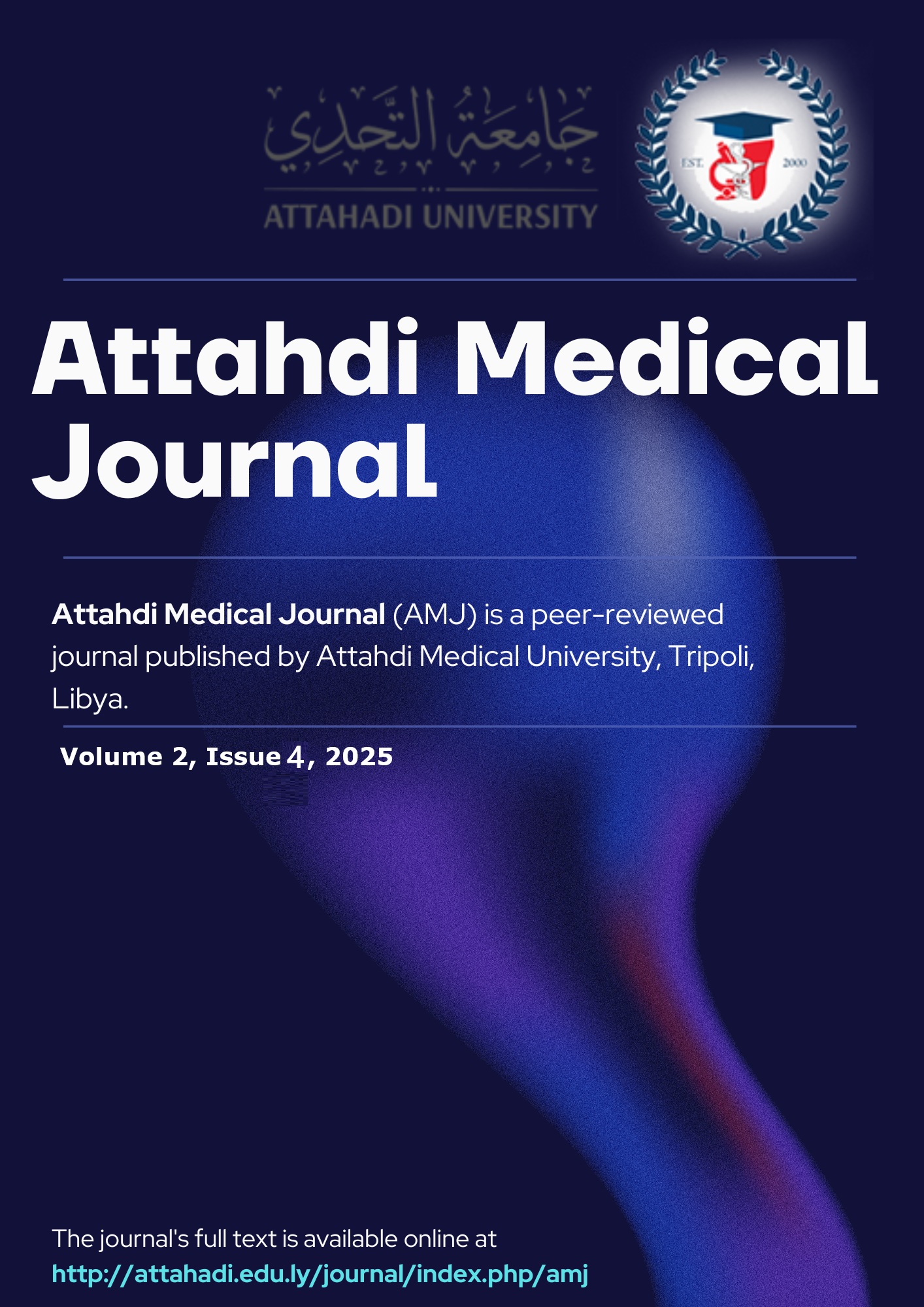Outcomes of Soft Palate Lengthening for Persistent Nasal Speech in Post-Palatoplasty Patients Over Five Years of Age
DOI:
https://doi.org/10.69667/amj.25406Keywords:
Velopharyngeal Insufficiency (VPI); Hypernasality; Soft Palate Lengthening; Intravelar Veloplasty; Posterior Pharyngeal Flap.Abstract
Having nasal speech due to velopharyngeal insufficiency (VPI) remains one of the most difficult complications to manage after cleft palate repair. Over early childhood, persistent hypernasality can impede the psychosocial and communicative development of a child. The purpose of this study was to assess the results of secondary soft palate lengthening surgery on children older than five years with a history of primary palatoplasty and persistent nasal speech. In this study, 60 non-syndromic patients with cleft palate whose nasal speech was persistent after cleft palate repair were included from January 2018 to December 2024 at Misurata Medical Center, Libya. Each of them underwent soft palate lengthening, most by intravelar veloplasty, and some by posterior pharyngeal flap. All the patients had preoperative and 12-month postoperative speech evaluation from both perceptual (Pittsburgh Weighted Speech Scale) and instrumental (nasometry) analysis. For statistical analysis, paired t-tests were used, with P < 0.05 considered significant. Of the total, 80% of patients had complete hypernasality correction, and 13.3% had partial correction. There was a significant improvement postoperatively on nasalance scores (48.5 ± 9.2% to 24.1 ± 6.8%, P < 0.001). 85% of the patients had improved speech intelligibility, with more than 86% of parents satisfied with the overall results. 10% had transient snoring and 5% had wound dehiscence, both classified as minor complications and were conservatively managed. For patients older than five years, soft palate lengthening is a secondary procedure that is both safe and effective for persistent nasal speech after cleft palate repair. It shows remarkable positive outcomes in resonance, intelligibility, and psychosocial confidence












